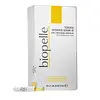What's inside
What's inside
 Key Ingredients
Key Ingredients

 Benefits
Benefits

 Concerns
Concerns

 Ingredients Side-by-side
Ingredients Side-by-side

Water
Skin ConditioningBetaine
HumectantPolyglyceryl-5 Laurate
EmulsifyingPhenoxyethanol
PreservativeButylene Glycol
HumectantGlycerin
HumectantCarbomer
Emulsion StabilisingParfum
MaskingLecithin
EmollientEthylhexylglycerin
Skin ConditioningSynthetic Fluorphlogopite
Disodium EDTA
Mica
Cosmetic ColorantSodium Hydroxide
BufferingBiosaccharide Gum-1
HumectantTheobroma Cacao Seed Extract
AntioxidantLimonene
PerfumingBenzyl Alcohol
PerfumingTin Oxide
AbrasiveAlumina
AbrasiveHexanoyl Dipeptide-3 Norleucine Acetate
Skin ConditioningCI 77891
Cosmetic ColorantCI 77491
Cosmetic ColorantWater, Betaine, Polyglyceryl-5 Laurate, Phenoxyethanol, Butylene Glycol, Glycerin, Carbomer, Parfum, Lecithin, Ethylhexylglycerin, Synthetic Fluorphlogopite, Disodium EDTA, Mica, Sodium Hydroxide, Biosaccharide Gum-1, Theobroma Cacao Seed Extract, Limonene, Benzyl Alcohol, Tin Oxide, Alumina, Hexanoyl Dipeptide-3 Norleucine Acetate, CI 77891, CI 77491
Propylene Glycol
HumectantSnail Secretion Filtrate
Skin ConditioningWater
Skin ConditioningMaltodextrin
AbsorbentSaccharide Isomerate
HumectantHexylene Glycol
EmulsifyingPolysorbate 20
EmulsifyingPEG/PPG-20/6 Dimethicone
EmulsifyingSodium Ascorbyl Phosphate
AntioxidantSodium Chloride
MaskingFructose
HumectantGlucose
HumectantTocopheryl Acetate
AntioxidantPolyquaternium-10
Citric Acid
BufferingTetrasodium EDTA
Phenoxyethanol
PreservativeParfum
MaskingUrea
BufferingDextrin
AbsorbentSucrose
HumectantGeraniol
PerfumingAspartic Acid
MaskingGlutamic Acid
HumectantAlanine
MaskingHexyl Nicotinate
EmollientSodium Citrate
BufferingHydroxycitronellal
PerfumingLinalool
PerfumingCoumarin
PerfumingHexyl Cinnamal
PerfumingLimonene
PerfumingPropylene Glycol, Snail Secretion Filtrate, Water, Maltodextrin, Saccharide Isomerate, Hexylene Glycol, Polysorbate 20, PEG/PPG-20/6 Dimethicone, Sodium Ascorbyl Phosphate, Sodium Chloride, Fructose, Glucose, Tocopheryl Acetate, Polyquaternium-10, Citric Acid, Tetrasodium EDTA, Phenoxyethanol, Parfum, Urea, Dextrin, Sucrose, Geraniol, Aspartic Acid, Glutamic Acid, Alanine, Hexyl Nicotinate, Sodium Citrate, Hydroxycitronellal, Linalool, Coumarin, Hexyl Cinnamal, Limonene
Ingredients Explained
These ingredients are found in both products.
Ingredients higher up in an ingredient list are typically present in a larger amount.
Limonene is a fragrance that adds scent and taste to a formulation.
It's found in the peel oil of citrus fruits and other plants such as lavender and eucalyptus. The scent of limonene is generally described as "sweet citrus".
Limonene acts as an antioxidant, meaning it helps neutralize free radicals.
When exposed to air, oxidized limonene may sensitize the skin. Because of this, limonene is often avoided by people with sensitive skin.
The term 'fragrance' is not regulated in many countries. In many cases, it is up to the brand to define this term. For instance, many brands choose to label themselves as "fragrance-free" because they are not using synthetic fragrances. However, their products may still contain ingredients such as essential oils that are considered a fragrance.
Learn more about LimoneneParfum is a catch-all term for an ingredient or more that is used to give a scent to products.
Also called "fragrance", this ingredient can be a blend of hundreds of chemicals or plant oils. This means every product with "fragrance" or "parfum" in the ingredients list is a different mixture.
For instance, Habanolide is a proprietary trade name for a specific aroma chemical. When used as a fragrance ingredient in cosmetics, most aroma chemicals fall under the broad labeling category of “FRAGRANCE” or “PARFUM” according to EU and US regulations.
The term 'parfum' or 'fragrance' is not regulated in many countries. In many cases, it is up to the brand to define this term.
For instance, many brands choose to label themselves as "fragrance-free" because they are not using synthetic fragrances. However, their products may still contain ingredients such as essential oils that are considered a fragrance by INCI standards.
One example is Calendula flower extract. Calendula is an essential oil that still imparts a scent or 'fragrance'.
Depending on the blend, the ingredients in the mixture can cause allergies and sensitivities on the skin. Some ingredients that are known EU allergens include linalool and citronellol.
Parfum can also be used to mask or cover an unpleasant scent.
The bottom line is: not all fragrances/parfum/ingredients are created equally. If you are worried about fragrances, we recommend taking a closer look at an ingredient. And of course, we always recommend speaking with a professional.
Learn more about ParfumPhenoxyethanol is a preservative that has germicide, antimicrobial, and aromatic properties. Studies show that phenoxyethanol can prevent microbial growth. By itself, it has a scent that is similar to that of a rose.
It's often used in formulations along with Caprylyl Glycol to preserve the shelf life of products.
Water. It's the most common cosmetic ingredient of all. You'll usually see it at the top of ingredient lists, meaning that it makes up the largest part of the product.
So why is it so popular? Water most often acts as a solvent - this means that it helps dissolve other ingredients into the formulation.
You'll also recognize water as that liquid we all need to stay alive. If you see this, drink a glass of water. Stay hydrated!
Learn more about Water